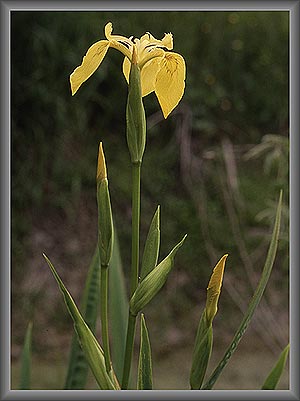 Some of the trees in the area are the White Poplar (Populus alba), Hawthorn (Crataegus monogyna), species of wild rose (Rosa spp.), Smoothleaf Elm (Ulmus minor) and Hedge Maple (Acer campestre).
Some of the trees in the area are the White Poplar (Populus alba), Hawthorn (Crataegus monogyna), species of wild rose (Rosa spp.), Smoothleaf Elm (Ulmus minor) and Hedge Maple (Acer campestre).
The marsh ponds in the ANPIL accommodate a narrow belt of the reeds round the perimeter such as the Marsh Reed (Phragmites australis) and False Bulrush (Typha latifolia).
Some of the plants in the draining channels are Water Cress (Nasturtium officinale), Purple Loosestrife (Lythrum salicaria), Great Willowherb (Epilobium hirsutum), Common Meadow-Rue (Thalictrum flavum) and Yellow Flag (Iris pseudacorus).
The recently excavated Education Pond will be gradually colonised spontaneously by wild marshland species and by introducing rare and threatened species.
Special pools are also being created in the Park, of different depths, exposition to sunlight, size and substrate type, suitable for offering homes to most of the rare and threatened water plants of Tuscany and especially the Piana Fiorentina.
As well as serving educational purposes, the operation has become necessary because of the dramatic fall in numbers of many aquatic plants belonging to rare or almost extinct species in the plain, especially due to the diminishing suitable habitat and introduction of two allocthonous species, the Red Swamp Crayfish (Procambarus clarkii) and the Coypu (Myocaster coypus), both of which have had a devastating effect on the aquatic phytocoenosis.
It is intended to build a proper apposite botanical garden dedicated to water plants, where the genomes of plants and varieties in rapid extinction can be conserved.



